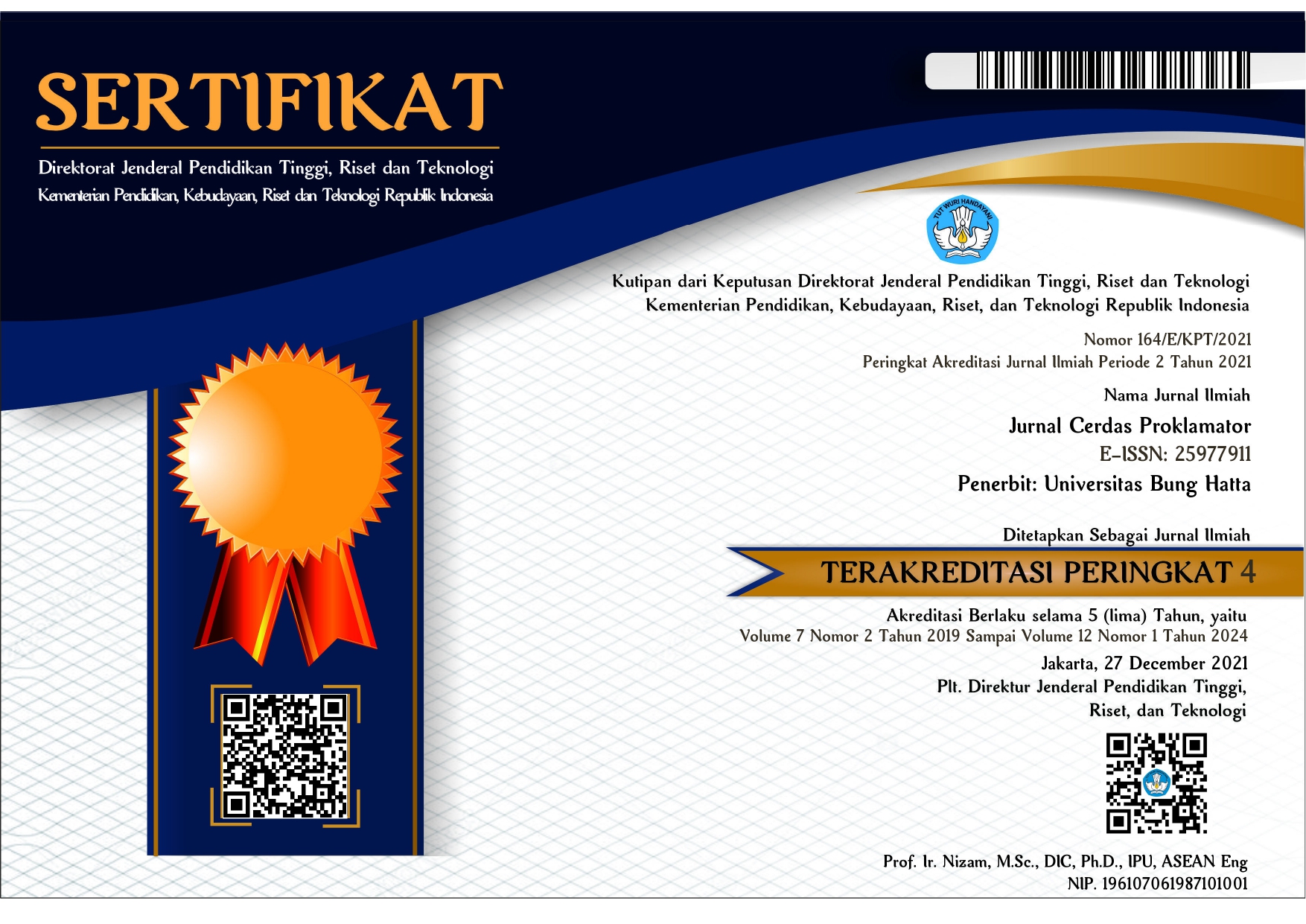EFEKTIFITAS UJIAN MADRASAH BERBASIS COMPUTER BASED TEST DI MADRASAH IBTIDAIYAH SWASTA PILADANG
Kata Kunci:
Effectiveness, Madrasah Exams, Computer Based Tests, Private Islamic SchoolsAbstrak
This study aims to describe the effectiveness of the madrasah exam with a computer-based test (CBT) system and prepare students to take the CBT madrasa exam, the effective use of CBT in the implementation of the Madrasah Exam at MIS Piladang, Lima Puluh Kota Regency.. The subjects of this study were the Madrasah Examination Implementation Committee, teachers and students. The object of this research is the use of CBT in the implementation of Madrasah Exams. This research is descriptive using a qualitative approach. Data was collected by means of observation, interviews, questionnaires and documents. The data analysis phase includes data reduction, data presentation, and drawing conclusions. The results of this study indicate that the process of using computers and paper-based systems in the implementation of the Madrasah Examination at MIS Piladang has been going well through the planning and implementation stages. Preparation of students according to the Madrasah Exam is good 90%. Student responses have been positive, students are ready to take the CBT Madrasah Exam at MIS Piladang. Preparation of students can be seen from many aspects, namely physical, mental, emotional and knowledge conditions. The use of CBT is considered effective because it has fulfilled several aspects, namely validity, reliability, purpose, practicality and economy.
Keywords: Effectiveness, Madrasah Exams, Computer Based Tests, Private Islamic Schools
Referensi
Arikunto, Suharsimi. (2010). Prosedur Penelitian Suatu Pendekatan Prakek. Jakarta: PT Rineka Cipta
Bagus H. (2017). Analisis Kesiapan Pelaksanaan Ujian Nasional Berbasis Komputer di SMA N 1 Kendal Tahun 2017.Skripsi, Fakultas Ilmu Pendidikan, Universitas Negeri Semarang
Fauzan, Fakih dan Mukminan. (2019). Efektivitas Tryout Ujian Nasional Berbasis Computer-Based Test untuk Mendukung Kesiapan dalam Menghadapi UNBK. Jurnal Inovasi Teknologi Pendidikan, 6(1), 56-68.
Ghony, Djunaidi. M. dan. Fauzan Almanshur. (2012). Metodelogi Penelitian Kualitatif. Yogyakarta: Ar-Ruzz Media.
Khoshsima, Hooshang. (2017). Cross-Mode Comparability of Computer Based Testing (CBT) Versus Paper Pencil Based Testing (PPT): An Investigation of Testing Administration Mode among Iranian Intermediate EFL Learners. English Language Teaching, 10(2), 121-133.
Kirschner, S., Borowski, A., Fischer, H.E., Gess-Newsome, J., & Aufschnaiter, V.C. (2016). Developing and Evaluating a Paper and Pencil Test to Assess Components of Physicsteachers’ Pedagogical Content Knowledge. International Journal of Science Education, 38(8),1343– 1372.
Labulan P.M. dan Effendi F. (2012). Pengembangan Smart Try Out Syste Berbasis Komputer pada Mata Pelajaran Matematika di Sekolah Kejuruan. Aksioma, 1(1), 83-93.
Lestari, Dwi. (2019). Penggunaan Computer Based Test (CBT) sebagai Sarana Evaluasi dan Pengaruhnya terhadap Efektivitas Penilaian pada Mata Pelajaran Sejarah di SMAN 1 Boyolali Tahun Ajaran 2015/2016. Jurnal Candi, 19(1), 30-40
Listyangish. (2014). Badan Perencanaan Pembangunan Daerah. BPFG Univesitas Gajah Mada
Moleong, J.L. (2004). Metodologi Penelitian Kualitatif. Bandung: PT. Remaja Rosdakarya
Ratnawulan, Elis dan Rusdiana. (2014). Evaluasi Belajar. Bandung: CV Pustaka Setia.
Scherer, R., & Siddiq, F. (2015). The Big Fishelittle Pond Effect Revisited: Do Different Types of Assessments Matter?. Computers and Education, 80(1), 198–210.
Shulhu Asysyfa, Diena. (2019). Pengembangan Paper Based Test (PBT) dan Computer Based Test (CBT) untuk Mengukur Kemampuan Berpikir Kritis Fisika dan Minat Peserta didik SMA di Kabupaten Kulonprogo. Tesis, Yogyakarta: Pascasarjana, Universitas Negeri Yogyakarta.
Slameto. (2010). Belajar dan Faktor-faktor yang Mempengaruhinya. Jakarta: Rineka Cipta
Wendra, I Wayan. (2016). Buku Ajar Penulisan Karya Ilmiah. Singaraja: Undiksha.
Wisudariani, Ni Made. (2016). Developing DIT and Reflection Assessment Model for the Teaching of Speaking Containing Character Values. Journal of Education and Social Sciences, 5(2), 104-109.
Wisudariani, Ni Made. (2016). Developing DIT and Reflection Assessment Model for the Teaching of Speaking Containing Character Values. Journal of Education and Social Sciences, 5(2), 104-109.
##submission.downloads##
Diterbitkan
Terbitan
Bagian
Lisensi
Hak Cipta (c) 2023 Cerdas Proklamator

Artikel ini berlisensi Creative Commons Attribution 4.0 International License.
Copy right in each article belong to the authors.
1. The author acknowledges that the Journal Cerdas Proklamator as a publisher who publishes for the first time with the
Creative Commons Attribution 4.0 International License.
2. The Author can enter the writing separately, manage the non exclusive distribution of manuscripts that have been published in this journal into the other versions (eg sent to the repository of the author's institution, publication in book, etc), by acknowledge that the manuscript was first published in the Jurnal Cerdas Proklamator.

























